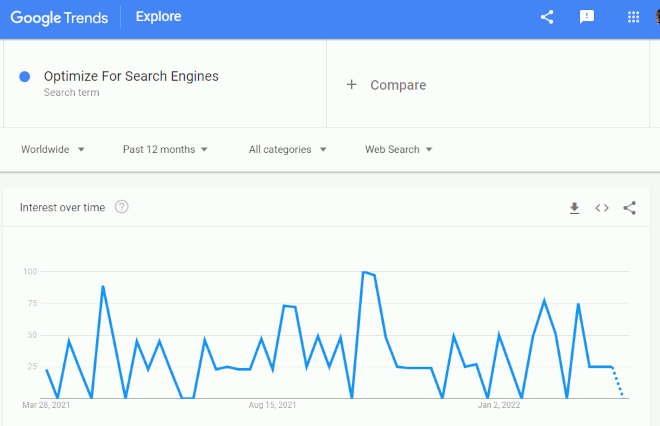Copywriters often find themselves at crossroads between writing for the customer and for the search engines. Most writers mistakenly believe that it can only be one of the two in a copy. This issue is often seen when writers focus too much on SEO rankings at the cost of the quality of their work.
We have to admit – the rat race is cut throat. Everyone wants to be the top search result on Google. However, these results aren’t achieved simply by writing for the search engines. At the end of the day, you are writing for your readers and it is them that you need to engage.
In this article, you will learn that it is possible to do both. You can write for your customers while also optimizing your content for search engines. Here are a few tips to help you achieve the perfect balance.
1. Choose Relevant Keywords
For your website content to reach the target audience in an engaging manner while also staying aligned with SEO practices, you will need to identify the right keywords. Keywords that feel natural and stay in line with the topic are the ones that will make your content great. You need to be very smart and strategic about your choice of keywords. Otherwise, your content will just get lost in the sea of thousands of platforms out there.
Incorporate an efficient keyword search strategy into your digital marketing plan that doesn’t look spammy.
We recommend using tools like Ubersuggest, Semrush or Ahrefs to find relevant keywords for your niche and target audience. You can find both short and long-tail keywords easily on this platform, and it will help you rank higher and reach your target audience more easily. It will also make it easier for your audience to reach the relevant webpage that they are looking for and get the information they need.
2. Keep Your Content Crisp And High Value
It is essential that you avoid large chunks of texts and break them down into smaller paragraphs of no more than 4 sentences. Keep your sentences brief and of high value. We also highly recommend making the information more digestible by breaking down various concepts into smaller steps, bullet points, or tips. This will make it easier for the audience to keep up with the depth of information that you’re sharing with them.
The readability of your copy is an important factor in determining the continued engagement of the audience with your content. Avoid unnecessarily complex words and phrases. Keep your sentences brief and clear. Use easy vocabulary where you can.
We recommend using a conversational tone in your copy if the nature of it allows, so the audience stays interested. When you address the reader as if you’re speaking to them directly, it will be much easier for them to follow your narrative, grasp the concepts, and comprehend the information you’re sharing. Simplicity and clarity are key to the high readability of any article.
3. Cite From High Authority Sources
Another important factor in improving SEO rankings as well as gaining the trust of your readers is to source credible sites for information. Make sure you link to credible sites and add references to high authority research to add more value to your articles. Readers will be more trusting of what you share with them when you back your opinions with facts and studies.
[Note from Editor: A good example of a high authority source is the SEO-link in the above paragraph. It links to searchengineland.com which has a very high Domain Authority score, DA 91]
4. Share High Quality & Valuable Content
In order to rank higher on search engines and engage your audience, it is essential that you share highly credible and valuable content with your audience. Make sure you are actually providing value to your readers by doing your research thoroughly.
Superficial information is widely available online, but what will set you apart from others is how much work and research you put into giving your audience the information that they need and find valuable.
[Note from editor: See our Content Marketing articles here: https://socialmediarevolver.com/category/extra-bullets/content-marketing/]
5. Generate Relevant Content
In order to engage your audience, businesses need to keep posting fresh content. However, it can be quite a struggle for bloggers to figure out what kind of content they should post. Google Trends can help with this. It gives you insights into what specific queries and keywords users search for the most. This way, you can create a content calendar that aligns with top user searches. If you feel it’s too overwhelming get advisory from an agency that works for your niche. For example, if you own a law firm, there are several lawyer SEO agencies that can help direct you on the right path.
There are a few things that you need to keep in mind while creating content with the Google Trends identified keywords that help with on-page SEO:
- Always use your selected primary keywords in your main headings, preferably in the title and introductory paragraph as well.
- The primary keyword should also be in a few subheadings and in the slug.
- In the overall content body, make sure your primary keyword appears between 1% to 2.5%.
- Make sure your keyword placement looks natural and doesn’t come off as forced or overstuffed.
- Scatter your selected primary and secondary keywords across your webpage copies, including headings, image texts, and the body.
- Make sure your use of content and keywords is targeted and contextual so that Google can pick up on it.
6. Add Images And Visuals
Visual elements play an important role in the ranking of website content and improving engagement. Readers get bored or disinterested easily, and visuals allow you to keep them engaged. Make sure you use high-quality and relevant images in your article to make it more interesting, engaging, and visually appealing.
Final Thoughts
Finally, the last element of a great copy that is written for both SEO and customers is a clear Call to Action (CTA). Don’t leave your audience confused with suggestive language. To do that, you need to add a clear and direct action call at the end of your article. Make sure you keep it short, ideally only one sentence long.
[Image credits – Main Photo by StartupStockPhotos, Pixabay; Girl blowing bubbles: Flickr, Kris Olin; other images or screen prints are from their respective websites and/or social platforms]
Dave Brown is a highly experienced content marketing expert who has been helping clients with digital marketing for many years. Not only is he determined to help businesses achieve their content marketing goals but he is also excited to take on new projects from a diverse range of industries.For reliable content writing services, reach out to him today!


